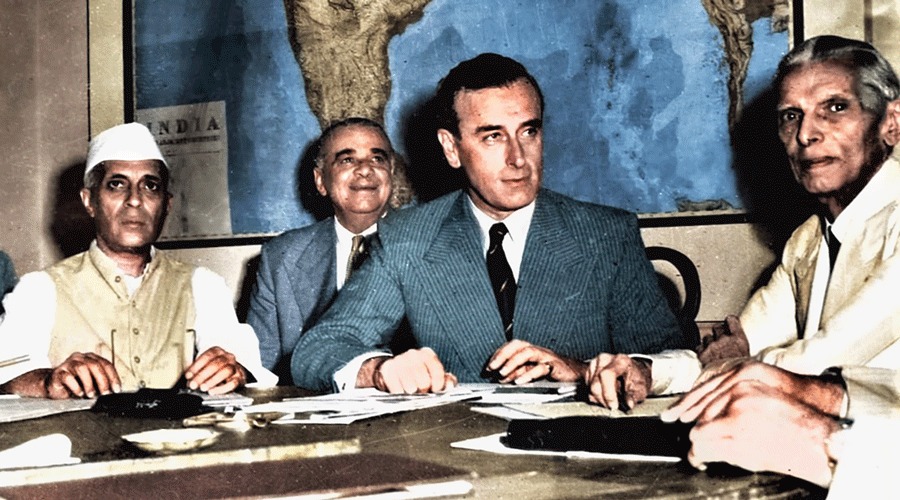
 The Mountbatten Plan and India’s Path to Independence
The Mountbatten Plan and India’s Path to Independence
3 June 1947
India’s independence on 15 August 1947 marked the end of over 200 years of British rule and brought revolutionary changes to the lives of its people. While the date of independence is well-known, there were several crucial moments leading up to it. One such significant date is 3 June 1947, when a historic decision was made regarding the country’s future. Let’s delve into the importance of this day in India’s freedom struggle.
The Road to Freedom
British Control in the 18th Century
In the 18th century, the British East India Company began establishing control over India, starting with the Battle of Plassey in 1757. Over time, the company expanded its influence, effectively becoming the de facto ruler of large parts of the subcontinent.
Key Rebellions in the 19th Century
The 19th century saw several significant uprisings against British rule. The most notable was the Revolt of 1857, also known as the First War of Indian Independence. Although it was ultimately suppressed, it set the stage for future resistance against colonial rule.
Rise of Nationalism in the 20th Century
In the 20th century, the Indian independence movement gained momentum under the leadership of Mahatma Gandhi. His non-violent resistance and civil disobedience campaigns, along with contributions from leaders like Jawaharlal Nehru, Sardar Vallabhbhai Patel, Subhas Chandra Bose, and numerous others, galvanized the nation towards freedom.
3 June 1947: A Pivotal Day in Indian History
The Mountbatten Plan
On 3 June 1947, a landmark announcement was made regarding the future of British India. This plan, known as the Mountbatten Plan, was proposed by Lord Louis Mountbatten, the last Viceroy of India. The plan laid out the roadmap for the partition of British India into two independent dominions: India and Pakistan.
Deciding on Independence
The plan set the date for India’s independence as 15 August 1947. It was a momentous decision that not only marked the end of British rule but also led to the creation of Pakistan, addressing the demand for a separate nation for Muslims.
The Decision to Partition
Formation of India and Pakistan
According to the Mountbatten Plan, India was to be divided into two countries: India and Pakistan. The plan outlined that the provinces of Punjab and Bengal would be divided based on religious demographics, with Muslim-majority areas forming Pakistan and Hindu-majority areas remaining with India.
Fate of the Sikh Majority Areas
The fate of Sikh-majority areas was to be decided through a referendum. This was a complex issue, as Sikhs were concentrated in the Punjab region, which was also a point of significant contention between the future nations of India and Pakistan.
Division of Bengal
The province of Bengal was also divided on religious lines, resulting in the creation of East Bengal (which later became Bangladesh) and West Bengal, which remained part of India.
Inclusion of Sindh in Pakistan
The plan also included the decision to incorporate Sindh into Pakistan. This decision had far-reaching consequences for the demographics and politics of the newly formed country.
Timeline for Transfer of Power
The Mountbatten Plan stipulated that the transfer of power should be completed by 30 June 1948. However, the urgency of the situation and the escalating communal tensions led to the advancement of the date to 15 August 1947.
Impact of the Mountbatten Plan
Approval of Partition
The Mountbatten Plan received the necessary approvals and led to the official partition of India. This decision, while seen as a solution to the communal tensions, resulted in one of the largest and most traumatic mass migrations in human history.
Mass Displacement and Communal Violence
The partition led to widespread communal violence and the displacement of millions. Families were torn apart, and entire communities were uprooted as Hindus, Muslims, and Sikhs moved across newly drawn borders to join their respective countries.
Long-lasting Consequences
The ramifications of the partition are still felt today. India and Pakistan have had a tumultuous relationship marked by wars, conflicts, and ongoing political tensions. The division also left deep scars on the collective memories of the people affected by the violence and displacement.
The decision made on 3 June 1947 was a turning point in the history of the Indian subcontinent. The Mountbatten Plan paved the way for India’s independence and the creation of Pakistan, forever altering the geopolitical landscape. While it marked the end of colonial rule and the beginning of self-governance, it also brought about significant challenges and upheavals. Understanding this pivotal moment helps us appreciate the complexities of the freedom struggle and the profound impact of partition on the region’s history.
Read More: India and Russia Reaffirm Ties as Leaders Share Car Ride After Airport Greeting

 Share
Share



